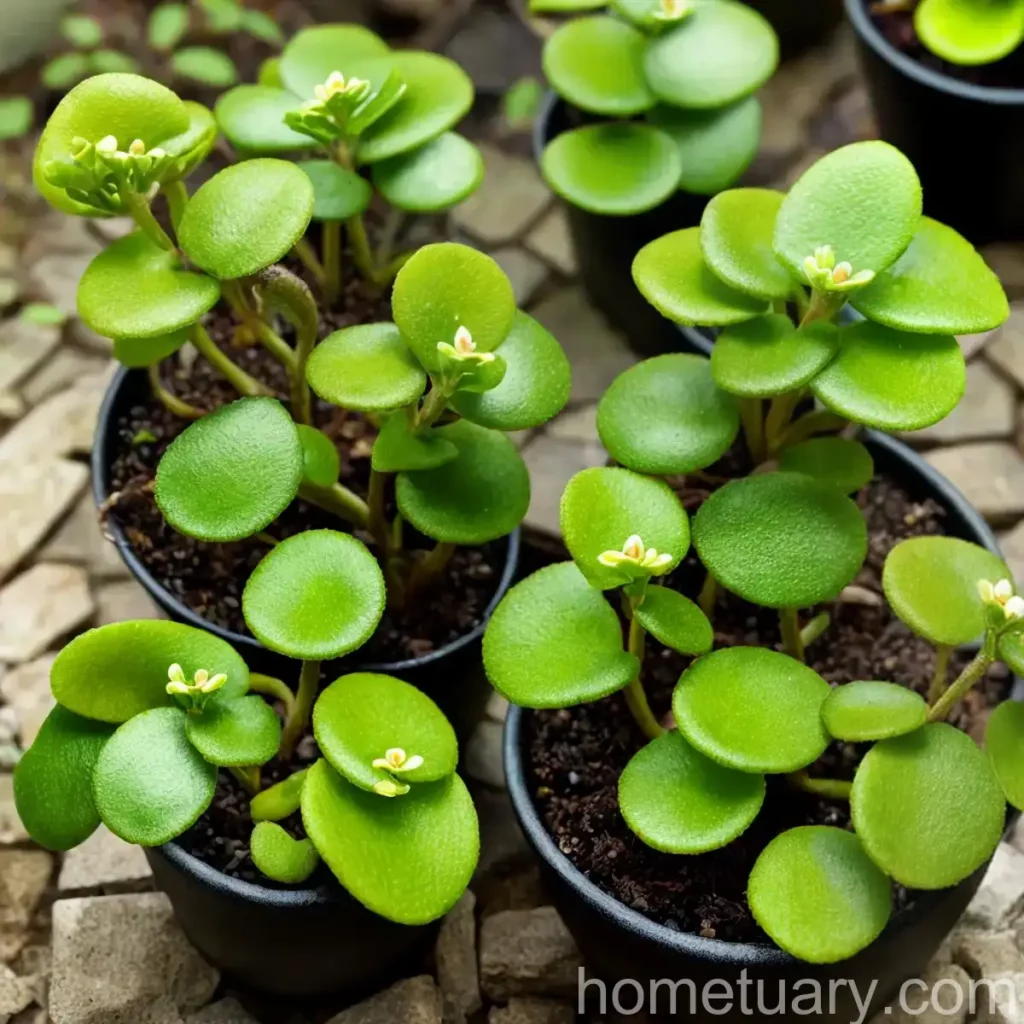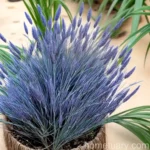Chrysosplenium Oppositifolium: A Comprehensive Plant Profile
Chrysosplenium Oppositifolium, commonly known as Opposite-leaved golden-saxifrage, is a fascinating plant that belongs to the Saxifragaceae family. This perennial plant is native to Europe and Asia and is popular for its unique foliage and delicate flowers. In this comprehensive plant profile, we will delve into the various aspects of Chrysosplenium Oppositifolium, including its culture, uses, care requirements, and more.
What is Chrysosplenium Oppositifolium?
Chrysosplenium Oppositifolium is a low-growing, herbaceous plant that thrives in moist, shaded environments. It is characterized by its opposite, kidney-shaped leaves and intricate yellow-green flowers that bloom in spring. This plant is often found in woodland areas, where it forms dense mats of foliage, creating a lush ground cover.
Key Takeaways: Chrysosplenium Oppositifolium
Before delving into the specific aspects of cultivating and caring for Chrysosplenium Oppositifolium, let’s take a look at some key takeaways about this unique plant.
- Scientific Name: Chrysosplenium Oppositifolium
- Common Name: Opposite-leaved golden-saxifrage
- Family: Saxifragaceae
- Native Habitat: Europe and Asia
- Foliage: Opposite, kidney-shaped leaves
- Flowering: Delicate yellow-green flowers
- Growth Habit: Low-growing, mat-forming
- Preferred Environment: Moist, shaded areas
- Uses: Ground cover, ornamental plant
Now that we have a general overview of Chrysosplenium Oppositifolium, let’s dive into the specific aspects of its culture, uses, and care requirements.
Culture
Chrysosplenium Oppositifolium has a distinct cultural background and preferred growing conditions. Understanding its cultural requirements is essential for successfully cultivating this plant.
Water
As a native of moist woodland environments, Chrysosplenium Oppositifolium thrives in consistently moist soil. It is important to ensure that the plant receives an adequate amount of water, especially during dry periods or when grown in containers.
Key Points:
– Watering Frequency: Regular watering to maintain soil moisture.
– Moisture Level: Soil should be consistently moist, but not waterlogged.
– Avoid Drying Out: Prevent the soil from drying out to ensure the plant’s vigor and health.
Sunlight
Chrysosplenium Oppositifolium is well-adapted to shaded conditions and prefers dappled or partial shade. When selecting a planting location, it is important to consider the plant’s light requirements to ensure optimal growth and foliage quality.
Key Points:
– Light Requirements: Partial to full shade, dappled sunlight.
– Protection from Harsh Sun: Shield from direct, intense sunlight.
– Woodland Setting: Mimics the natural habitat of the plant.
Soil
The ideal soil for Chrysosplenium Oppositifolium should replicate the moist, well-draining conditions found in its native woodland habitats. Understanding the soil preferences of this plant is crucial for creating a suitable growing environment.
Key Points:
– Soil Type: Moist, humus-rich soil.
– Drainage: Well-draining to prevent waterlogging.
– Organic Matter: Incorporate organic material for soil enrichment.
Fertilizer
While Chrysosplenium Oppositifolium generally thrives in nutrient-rich woodland soils, it may benefit from supplemental fertilization, especially when grown in containers or less fertile garden soils.
Key Points:
– Fertilization Frequency: Apply a balanced, organic fertilizer in spring.
– Moderate Application: Avoid excessive fertilization to prevent issues.
– Organic Options: Consider using compost or organic fertilizers.
Pruning
Pruning Chrysosplenium Oppositifolium is generally minimal, focusing on the removal of any damaged or wilted foliage. Periodic maintenance can help promote healthy growth and maintain the plant’s attractive appearance.
Key Points:
– Minimal Pruning: Limited to removal of damaged or spent foliage.
– Tidying Up: Trim back any unsightly or overcrowded growth.
– Avoid Overpruning: Allow the natural habit of the plant to flourish.
Propagation
Propagating Chrysosplenium Oppositifolium can be achieved through several methods, including division, stem cuttings, and seed propagation. Understanding these techniques is valuable for expanding the plant’s presence in a garden or landscape.
Key Points:
– Division: Divide mature plants in early spring or fall.
– Stem Cuttings: Root stem cuttings in a well-draining medium.
– Seed Propagation: Sow seeds in a controlled environment for germination.
Container Gardening
Chrysosplenium Oppositifolium can thrive in container gardens, offering an opportunity to showcase its unique foliage and delicate flowers in a more controlled setting.
Key Points:
– Container Size: Choose a spacious container to accommodate root growth.
– Well-Draining Soil: Use a high-quality, well-draining potting mix.
– Regular Watering: Monitor soil moisture in containers, ensuring consistent watering.
Uses
Chrysosplenium Oppositifolium serves several practical and ornamental purposes, adding value to garden landscapes and shaded woodland areas.
Key Uses:
– Ground Cover: Forms lush, low-growing mats in shaded areas.
– Ornamental Plant: Adds texture and interest to woodland gardens.
– Erosion Control: Helps stabilize soil on slopes and shaded banks.
With an understanding of Chrysosplenium Oppositifolium’s culture, uses, and care requirements, let’s move on to disease and pest management, along with additional botanist’s tips and fun facts about this intriguing plant.
Common Diseases
Understanding the potential diseases that can affect Chrysosplenium Oppositifolium is essential for proactive management and maintaining the plant’s health and vigor.
Disease Diagnosis
Chrysosplenium Oppositifolium may be susceptible to certain fungal and bacterial diseases, particularly in conditions of excessive moisture and poor air circulation.
Common Diseases:
1. Powdery Mildew: Appears as a white, powdery coating on foliage.
2. Leaf Spot: Causes dark, water-soaked lesions on leaves.
3. Root Rot: Results from waterlogging and poorly drained soils.
4. Botrytis Blight: Gray mold that affects foliage in humid conditions.
Disease Management
Implementing preventive measures and prompt intervention is critical for effectively managing and mitigating the impact of diseases on Chrysosplenium Oppositifolium.
Key Strategies:
– Air Circulation: Ensure adequate airflow around the plant.
– Avoid Overhead Watering: Minimize moisture on foliage.
– Well-Drained Soil: Prevent waterlogged conditions.
– Prune Infected Plant Parts: Remove and dispose of affected foliage.
Common Pests
While Chrysosplenium Oppositifolium is generally resistant to pest infestations, it may occasionally encounter certain insect pests that can affect its growth and appearance.
Botanist’s Tips
Learning from the insights of botanists and experts can provide valuable guidance for cultivating and caring for Chrysosplenium Oppositifolium.
Key Tips:
– Native Habitat: Understand the plant’s natural environment for successful cultivation.
– Observation: Regularly observe the plant for signs of stress, disease, or pests.
– Appropriate Maintenance: Avoid excessive pruning and fertilization.
Fun Facts
Exploring the intriguing facets of Chrysosplenium Oppositifolium can reveal fascinating details that contribute to a deeper appreciation of this unique plant.
Did You Know?
– Chrysosplenium Oppositifolium derives its name from the Greek words “chrysos,” meaning “gold,” and “splen,” meaning “spleen,” referring to the plant’s traditional medicinal uses.
– The delicate, yellow-green flowers of Chrysosplenium Oppositifolium add an enchanting touch to shaded woodland settings, attracting early spring pollinators.
– In folklore and traditional medicine, Chrysosplenium Oppositifolium has been associated with various symbolic meanings and herbal remedies, reflecting its cultural significance.
With its lush foliage, delicate blooms, and intriguing cultural and historical connections, Chrysosplenium Oppositifolium emerges as a plant of captivating beauty and significance.
Links to External Resources
For additional information, resources, and insights on Chrysosplenium Oppositifolium, consider exploring the following links:
- Royal Horticultural Society – Chrysosplenium Oppositifolium
- Missouri Botanical Garden – Chrysosplenium Oppositifolium
In conclusion, Chrysosplenium Oppositifolium stands as a captivating plant with distinctive characteristics, cultural relevance, and practical uses in garden landscapes. By embracing its care requirements, understanding its cultural significance, and exploring its enriching attributes, this exceptional plant can flourish and inspire a deeper appreciation for the natural world.















